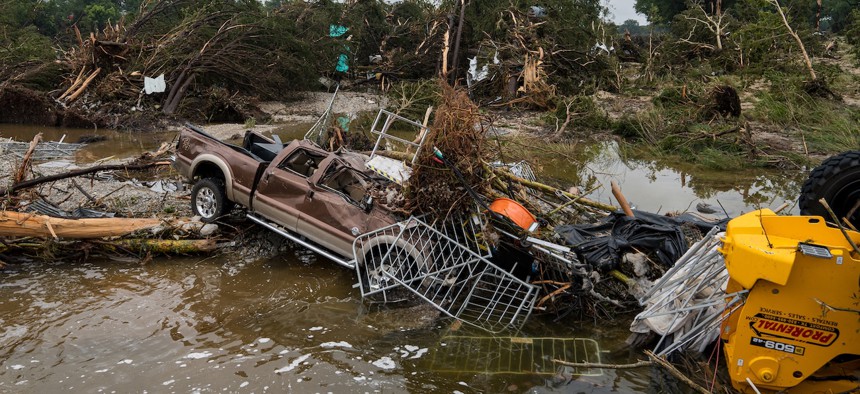Analysis of Meteorological Staffing and Texas Flooding
Following the tragic flooding in Texas, some Democratic leaders have raised concerns regarding the implications of workforce cuts made during the Trump administration, specifically affecting meteorological services. Senator Chris Murphy remarked that “accurate weather forecasting helps avoid fatal disasters,” suggesting that these cuts may have hindered the National Weather Service’s (NWS) capacity to effectively predict such catastrophic events.
However, White House Press Secretary Karoline Leavitt countered these claims, asserting that NWS offices were adequately staffed during the floods, stating, “These offices were well staffed… so any claims to the contrary are completely false.”
Understanding the Cuts
The Trump administration initiated a proposal to cut the budget for the National Oceanic and Atmospheric Administration (NOAA) by 25%, starting in the upcoming financial year, which begins in October 2025. This budget cut would not have impacted the recent flooding, but it’s important to note that the NWS had already reduced its workforce due to prior layoffs and efficiency measures.
The Department of Government Efficiency (Doge), which was formerly overseen by Elon Musk, offered voluntary redundancies and early retirement options for federal employees. As a result, approximately 200 NWS employees accepted buyouts, with an additional 300 opting for early retirement. These actions have led to a total reduction of about 600 employees from a workforce of around 4,200, according to Tom Fahy, the legislative director of the National Weather Service Employees Organisation union.
An analysis from the Associated Press indicated that approximately half of the NWS offices across the country faced a vacancy rate of 20%, which is double the rate observed a decade ago. Nevertheless, experts who spoke with BBC Verify assured that the forecasts and warnings issued during last week’s floods were sufficient, as the specific localized rainfall events were inherently difficult to predict.
Local Office Staffing and Coordination
Despite the overall adequacy of forecasts, there are concerns about the local NWS offices in Texas. According to Daniel Swain, a climate scientist at UCLA, the staffing reductions may have impacted the effectiveness of communication with local emergency services. He stated, “There is a real question as to whether the communication of weather information occurred in a way that was sub-optimal.” This is echoed by reports indicating vacancies in the San Angelo and San Antonio offices, which serve the flooding-affected regions.
The NWS union highlighted that the San Antonio office was missing key positions such as a warning coordinating meteorologist, crucial for relaying pertinent weather information to emergency management. However, NWS officials confirmed that both the Austin/San Antonio and San Angelo offices increased staffing in anticipation of severe weather conditions, ensuring forecasts and warnings were issued promptly.
| Category | Details |
|---|---|
| NWS Workforce Reduction | Approximately 600 staff lost from a total of 4,200. |
| Vacancy Rate | Vacancy rate of 20%, double the rate from a decade ago. |
| Critical Vacancies | San Antonio office missing meteorologists; San Angelo lacked a senior hydrologist. |
Impact of Weather Balloon Launches
Concerns have also been voiced regarding a reported reduction in weather balloon launches, which are essential for collecting atmospheric data crucial to forecasts. Meteorologist John Morales noted that weather balloons have been launched 20% less often due to staffing cuts. Although the NWS confirmed decreases in balloon launches at several stations, it appears that the Del Rio station, closest to the flooding, operated normally leading up to the floods, gathering necessary data for forecasts.
In conclusion, while some staffing challenges exist and have raised questions about local NWS capabilities, the forecasts issued during the Texas floods were deemed adequate by experts. Ongoing discussions regarding resource allocation and staffing in meteorology continue as a crucial point of focus for enhancing disaster readiness across the nation.


